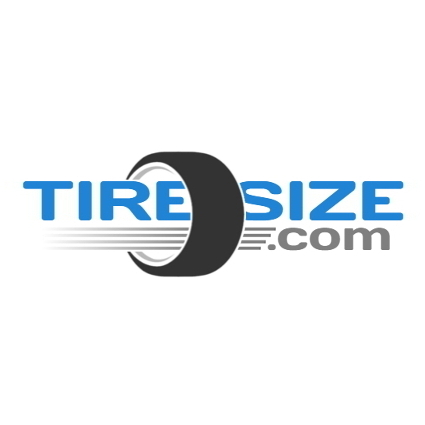I hope this post will help to end the debate with facts and not opinions, and become THE post people refer to those who are having a hard time deciding.
You already know that 3.92 is better for towing, and 3.21 gets better fuel economy, so I will talk about what you might not know
Bottom line up front:
In layman's terms, to conceptualize the difference, imagine
1) 5 out the of 8 gears have the same final drive ratio between 3.21 and 3.92.
2) 3.21 has "an extra" overdrive gear.
3) 3.21 has 2 unique lower gears for towing.
4) 3.92 has 3 unique lower gears for towing.
5) Speed range that 3.21 is better at towing: 31-38 MPH, 48-57 MPH.
6) Speed range that 3.92 is better at towing: 0-30 MPH, 39-47MPH, 58-70 MPH.
Explanation
1) 5 out the of 8 gears have the same final drive ratio between 3.21 and 3.92:
Here's the gear ratio for the 8 speed transmission:
1) 4.71:1 2) 3.14:1 3) 2.10:1 4) 1.67:1 5) 1.29:1 6) 1.00:1 7) 0.84:1 8) 0.67:1 Reverse) 3.30:1
Final drive ratios with 3.21
1st. 15.12, 2nd. 10.10, 3rd. 6.74, 4th. 5.36, 5th. 4.14, 6th. 3.21, 7th. 2.70, 8th. 2.15, R 10.6
Final drive ratios with 3.92
1st. 18.46, 2nd. 12.31, 3rd. 8.23, 4th. 6.55, 5th. 5.06, 6th. 3.92, 7th. 3.29, 8th. 2.62, R 12.94
From the list below, we can see that gears 3-7 in 3.21 matches gears 4-8 in 3.92:
-- NO MATCH -- = 18.46 - 1st - 3.92
3.21 - 1st - 15.12 = -- NO MATCH --
-- NO MATCH -- = 12.31 - 2nd - 3.92
3.21 - 2nd - 10.1 = -- NO MATCH --
-- NO MATCH -- = 8.23 - 3rd - 3.92
3.21 - 3rd - 6.74 = 6.55 - 4th - 3.92
3.21 - 4th - 5.36 = 5.06 - 5th - 3.92
3.21 - 5th - 4.14 = 3.92 - 6th - 3.92
3.21 - 6th - 3.21 = 3.29 - 7th - 3.92
3.21 - 7th - 2.70 = 2.62 - 8th - 3.92
3.21 - 8th - 2.15 = -- NO MATCH --
2) 3.21 has "an extra" overdrive gear:
The 8th gear in 3.92 is the 7th gear in 3.21, thus effectively mean the 8th gear in the 3.21 is an extra gear to the 3.92.
Meaning, when you go test drive the 3.21 you will have to downshift to 7th to get the same acceleration at 3.92's 8th on freeways. That is why some people complain about how "sloppy" the 3.21 is, because the 3.21 has an extra overdrive gear for fuel economy. If you shift 3.21 in 7th gear, you will get the same acceleration as the 3.92 in 8th on the freeway. No, 3.21 isn't sloppy, you're just in a gear that 3.92 does not have.
3) 3.21 has 2 unique lower gears for towing:
As we know from 1), 5 gears have the same final drive ratio.
You "gain" an overdrive gear, but you "lose" one towing gear.
Here's the final drive ratio for the 2 towing gears.
1st. 15.12, 2nd. 10.10,
4) 3.92 has 3 unique lower gears for towing:
Same logic as the last
Final drive for 3 towing gears.
1st. 18.46, 2nd. 12.31, 3rd. 8.23.
5) Speed range where 3.21 is better at towing: 31-38 MPH, 48-57 MPH,
AND
6) Speed range where 3.92 is better at towing: 0-30 MPH, 39-47MPH, 58-70 MPH:
Calculated towing shift point to be 6000 rpm, if I'm off the logic is the same but the speed will vary.
For towing,
From the speed 0-30 MPH, 3.92 has higher final drive ratio over 3.21 (18.46 vs 15.12) until it has to shift to 2nd gear at 30MPH.
From the speed 31-38 MPH, 3.21 has higher final drive ratio over 3.92 (15.12 vs 12.31) until it has to shift to 2nd gear at 38MPH.
From the speed 39-47 MPH, 3.92 has higher final drive ratio over 3.21 (12.31 vs 10.10) until it has to shift to 3rd gear at 47 MPH.
From the speed 48-57 MPH, 3.21 has higher final drive ratio over 3.92 (10.10 vs 8.23) until it has to shift to 3rd gear at 57 MPH.
From the speed 58-70 MPH, 3.92 has higher final drive ratio over 3.21 (8.23 vs 6.74) until it has to shift to 4th gear at 70 MPH.
The key takeaway here is that towing heavier trailers uphill with 3.21 might never reach the desired speed within the 58-70 MPH range (typical highway towing speed) because 3.21 jumps from 10.10 to 6.74 without the 8.23 final drive ratio found in 3.92 that really help maintaining highway towing speed at max load.
Do you value the "extra" overdrive gear for fuel economy? or do you value the extra towing capability that you tell yourself you might one day need? That's up to you.

tiresize.com











